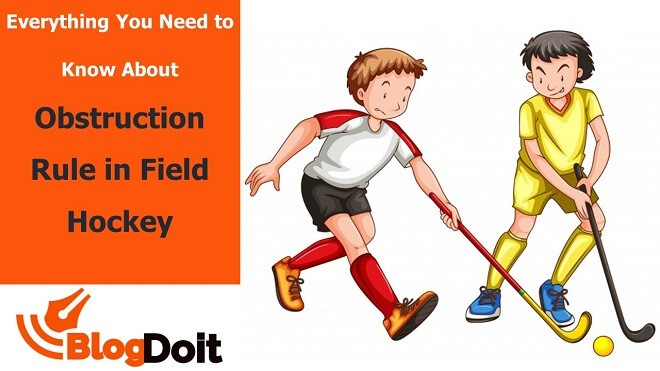
What is Obstruction Rule in Field Hockey? Well, it is an essential rule for those who are trying to learn playing hockey. We are presenting you the ultimate expert explanation on obstruction rule.
Hockey has established itself as one of the most popular sports in the twenty-first century, with its many forms such as ice hockey, field hockey, bandy, rink hockey.
Read More About Creating Smoke in Minecraft
Although on the surface level, all the hockey types are more or less the same – players manoeuvring with sticks on their hand to put the ball/puck into the goal, the rules dictating the game differ from one type to another.
As the main focus of this write-up is field hockey, we are going to walk you through the obstruction rules – probably the highest-attention-paid rules of the game – of field hockey.
What is Obstruction Rule in Field Hockey?
Obstructions rules ensure fair play in field hockey. As you can guess from the name, the rules were introduced to monitor if any player is obstructing another player.
Simply put obstruction is any active movement to prevent the playing of the ball.
Obstruction happens when a player in possession of the ball shields the ball with the stick, hand, or leg so that the opponent player cannot take possession of the ball from him.
It can also happen when a player, trying to take possession of the ball, obstructs the player (who owns the ball) with his stick, leg, or hand.
Whether it is intentional or not, this sort of activity will be declared foul. Obstruction can take place in three forms –
- Stick obstruction
- Body obstruction
- 3rd part obstruction
1. Stick Obstruction
Stick obstruction is an obstruction created by the use of sticks.
As the rulebook says, players obstruct when they physically interfere with the opponent player’s stick and when they shield the ball from a legitimate tackle with the stick.
Consider, a player is trying to pass the ball to his teammate.
An opponent player is also trying to tackle him. But if the opposing player hits the stick of the player in possession of the ball, it will be declared foul.
However, if the payer in possession of the ball loses control of, or passes on, the ball, and then the opposing player hits the stick, it won’t be considered to be an obstruction.
An obstruction can also take place in the form of grabbing the opponent player’s stick – physical interference.
When a defender is looking for a tackle, s/he has to tackle the ball only by touching the ball with his stick first.
If he touches the ball first and obstructs the opponent’s stick, only then it would be a legitimate tackle. No obstruction has occurred here.
2. Body Obstruction
In its purest form, body obstruction occurs when a blockage occurs concerning a player’s body.
Body obstruction takes place when a player backs into or physically interfere with another player and shields the ball from a legitimate tackle with her body, as the rulebook of field hockey suggests.
Consider, a player in possession of the ball moving forward. A defender is moving toward to make a tackle.
The moment the defender is attempting to make the tackle, backing him that is, she makes physical contact and starts moving backwards with the ball.
This will be considered an obstruction – a body obstruction. A free-hit will be given to the defence.
Again, when a player in possession of the ball is moving toward, if an opponent player pushes away, it would be an obstruction.
If all this happens in the defending team’s circle, where a defender has the ball, and an attacker bumps the defender off the ball, a free hit will be given to the defence.
In contrast, if an attacker has the ball and a defender knocks her off the ball, a penalty corner will be given to the attacking team.
This can happen with the goalkeeper as well. If the ball gets stuck into the goalkeeper’s pad, it will be declared an obstruction unless the attacker gets the ball back from the goalkeeper’s pad.
The goalkeeper can also intentionally create an obstacle by holding the ball, preventing the attacker from playing the ball.
Third Part Obstruction
Third part obstruction, also known as shadow obstruction, is quite similar to body obstruction, except that the obstacle is created by neither the player already in possession of the ball nor the player trying to tackle.
Instead, the blockage is created by another player. Thus the name became ‘third party obstruction’.
A player is declared to have obstructed when she blocks an opponent player to stop them legitimately play the ball.
It happens when an attacker blocks any defender during a penalty corner being taken.
Final Words: What is Obstruction Rule in Field Hockey
As said earlier, obstruction is probably given the most attention by the match official in a field hockey game. And if it’s true, this is how it should be.
Obstructions are indeed meant to give an unfair advantage to the player who is obstructing. That’s why obstruction rules are so comprehensive in field hockey.
So if you play field hockey as your pastime or an avid spectator of the game, you should know the rules of the game.
Now that you have read the article, surely you know the obstruction rules in great detail, which is great, of course!